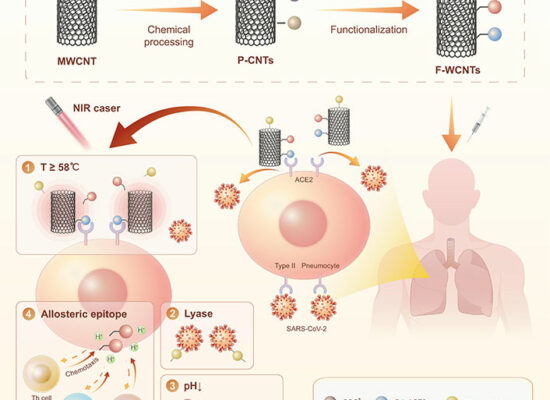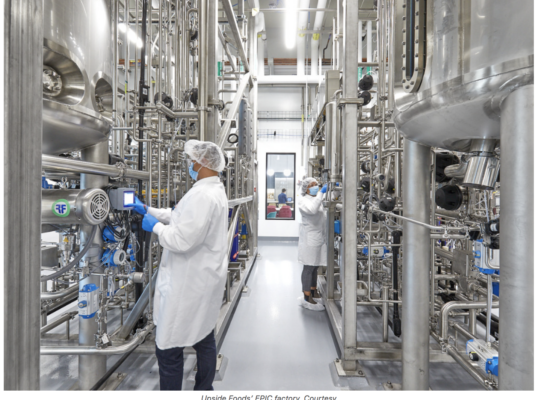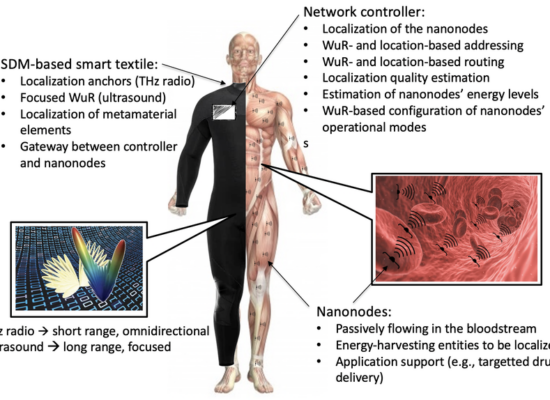Appetizer : CoYid/19 “vaccines” soon in your lettuce and spinach?
GSK/Pfizer is proposing a new vaccine for CoYid/19 made in partnership with the necro-technology company Medicago – which launched phase 3 trials in March 2021.[670] Its technicians are inserting genetic sequences into genetically modified soil bacteria – namely, genetic chimeras of the species Agrobacterium tumefaciens – that are inoculated into plants of a Tobacco species, Nicotiana benthamiana. In the spring of 2020, the director of Medicago declared that he could produce 10 million doses of “vaccines”, against CoYid/19, per month.
See the 2017 study titled “Replication-independent long-distance trafficking by viral RNAs in Nicotiana benthamiana.”…[1604]. According to this study, when the so-called brome mosaic virus is inoculated – via chimeric Agrobacterium tumefaciens – into a tobacco leaf, it subsequently spreads to all parts of the plant.
On September 16, 2021, the University of California Riverside published a paper outlining its recent research involving the creation of an mRNA “vaccine” vectored by edible, cultivated plants – in this case lettuce and spinach. The goal of this research, funded by the National Science Foundation, is to show that the DNA containing the mRNA vaccines can be delivered into a plant cell where it will replicate; to prove that plants can produce enough mRNA to compete with conventional injections; and, finally, to discover the right dose. [1605] According to Juan Pablo Giraldo, in charge of this research, «Ideally, a single plant would produce enough mRNA to vaccinate a single person».
For this project, Juan Pablo Girald collaborated with Nicole Steinmetz, professor of nano-engineering at UC San Diego, to use nano-technologies, chemized by her team, to deliver genetic material into chloroplasts. According to Nicole Steinmetz: «Our idea is to repurpose naturally occurring nanoparticles, namely plant viruses, for gene delivery to plants. Some engineering goes into this to make the nanoparticles go to the chloroplasts and also to render them non-infectious toward the plants».
Their goal is, thus, to have these lettuces and spinach, chimerized with vaccine mRNA, grown by gardeners themselves – or by large-scale market gardeners for city populations.
The project to create an mRNA “vaccine” vectored through edible, cultivated plants is not unique to UC Riverside. The University of Ottawa, Canada, is also conducting research on the creation of a CoYid/19 mRNA “vaccine” vectorized by tomatoes, lettuce or potatoes. [1620]

About Graphene Oxide in all sectors of Agriculture: fertilizers and biocides
In England, researchers at the University of Manchester are working on a new concept, called “Graphene City”, which aims to grapheneize all supply chains – and, in fact, all sectors of daily life.
One of their research objectives is to graphenize agriculture. They are, thus, developing an agricultural alternative they have named “GelPonic” in order to, allegedly, reduce energy and space wastage by promoting vertical farming. “GelPonic” is a graphene hydrogel that would have the ability to “sense” the nutritional needs of plants in the soil and satisfy them.
This research, funded by the UK government and Europe, is under the responsibility of Dr. Beenish Siddique, the founder and CEO of AEH Innovative Hydrogel – which is located in the Graphene Engineering Innovation Centre in Manchester. [77]
The graphene hydrogel, from AEH Innovative Hydrogel, is also used for medical applications – in particular to treat chronic wounds, to avoid infections and amputations. [78]
“Connected” bandages are also manufactured by Grapheal in Grenoble, in France – a graphenizing company that also offers a “digital” CoYid/19 saliva test. Grapheal announces itself as “designer and manufacturer of embedded digital biosensors for field medical diagnosis and remote patient monitoring”. [902] [903] The connected bandage is presented as follows: «This smart and connected graphene-based bandage is extremely flexible and adapts easily to any part of the body. Its tiny wireless electronic components with very light and highly flexible electrodes transmit data to a mobile application. Using tele-medicine software and medical technologies in the cloud, the hospital receives the information, which can then be monitored and evaluated by a specialist.»
One study, published in July 2021, even proposes an aerogel composed of graphene oxide and polyethylene glycol reinforced with grape seed extract (for its proanthocyanidins) to heal wounds.
In California, Juan Pablo Girald – from the University of California Riverside – is leading a $1.6 million funded project on using nanotechnology to deliver nitrogen, as a fertilizer, directly into chloroplasts.
These researchers specify, with their hand on their heart, that all their researches are oriented towards “ecology” – that is to say the same ecology that Jadot, the French leader of the Vaccinalist Greens, promotes in the pay of Klaus Schwab, the demented eugenist. It is a question of optimizing the delivery of nitrogen into the cells of the cultivated plants in order to avoid its waste – which is real, namely the direct infiltration, of half of this nitrogen of synthesis, in the water tables.
The question one must ask oneself when dealing with these mentally disturbed people is: what is the nature of this “engineering” of the chimerization that must be applied in order for the nanoparticles to access the chloroplasts? In short, what is the process by which the “refunctionalization” of phytoviruses – that is, of plant-infecting viruses – is carried out?
According to the presentation of a Korean patent, from 2019, on increasing plant growth by incorporating graphene nanoparticles – in wheat, lettuce, tomato, eggplant, spinach, celery, watermelon, strawberry, melon, mango, banana and orange.
«For example, it has been shown that carbon nanotubes can penetrate cell walls and cell membranes, and conjugates of carbon nanotubes and DNA can also penetrate plant cell walls. In other words, there is room for the use of engineered nanomaterials as an effective platform for delivering plant growth promoting molecules to plant cells, and at the same time, since only a small amount of nanomaterials is required, environmental pollution can be reduced and have special functions. Can target specific cells. It has been shown that single-walled carbon nanotubes can be transported and localized in the chloroplast lipid bilayer through kinetic trapping that promotes photosynthetic action and electron transfer. In addition, it has been found that single-walled carbon nanotubes functionalized to allow penetration of plant cell organelles through the laminae can act as a detector for nitro-aromatics by emitting infrared fluorescence. » [929]
The other question we have to ask ourselves: could it be a “refunctionalization” with graphene oxide, carbon quantum dots or carbon nanotubes? Would these graphene nanoparticles be used for conveying purposes… in order to access the chloroplasts?
It is very likely that the answer will be of the same type as for the Quantum/19 injections of the Pharmacratic Mafia. The mRNA is wrapped in lipid nanoparticles and nothing more… And how do we explain, then, the magnetization of some of the injected?
This question is all the more essential as there are already, on the agricultural level, for about ten years, a good number of patents, and studies, relating to the insertion of graphene oxide in fertilizers, and in biocides of all kinds, as well as for the intensification of the growth processes. These patent applications date from the last few years. For example, here is a partial list of such patents:
“A kind of foliar fertilizer of graphene-containing nano material”. 2016 China. CN106747954A. [922]
“Porous oxidation graphene and preparation method thereof and porous oxidation graphene coated slow-release chemical fertilizer and preparation method thereof”. 2017. China. CN107585764A. [923]
“Graphene oxide and Antagonistic Fungi compound the application in terms of preventing plant phytophthora root rot”. 2018. China. CN108782610A. [926]
“Water-based graphene oxide nano pesticide and preparation method and application thereof”. 2020. China. CN111149798A.[927]
“Graphene oxide-containing pesticide composition”. 2019. China. CN112293419A. [928]
“Composition for crop improvement”. 2019. South Korea. KR20210040597A. [929]
For example, in the spring of 2018, the University of Adelaide in Australia made headlines in the Industrial Fertilization industry by announcing the effectiveness of “eco-friendly” industrial fertilizers because they are vectorized by graphene oxide. [934] [935]
A study was published, in 2014, entitled “Slow-release fertilizer encapsulated by graphene oxide films” [936] as well as another study, in 2017, entitled “Cogranulation of Low Rates of Graphene and Graphene Oxide with Macronutrient Fertilizers Remarkably Improves Their Physical Properties”. [937] As I mentioned in another section of this file, graphene oxide is sometimes functionalized with chitosan. There is, thus, a study, of June 2019, entitled “Chitosan and Graphene Oxide Nanocomposites as Coatings for Controlled-Release Fertilizer”. [938] All of these studies involve fertilizers encapsulated in graphene oxide – for better dissemination and vectorization.
There is even a patent, from 2020, which is entitled “Application of graphene aqueous dispersion in farmland water retention, fertilizer retention and bacteriostasis”. [1112] It is, therefore, a dissemination of an aqueous dispersion of graphene in agricultural water retentions, in fertilizer tanks… under a bacteriostatic pretext.
For example, in April 2021, a Chinese team published their research on increasing the growth of Aloe Vera by adding graphene oxide nanoparticles to irrigation water – at 50 mg per liter. [1608]
This new technology is called “bionic strategy for plant growth acceleration by nanoparticle injection”.
Thus, in April 2020, a Korean team published their research on enhancing the growth of watermelons by injecting graphene oxide into its stems. [1609]
In July 2021, a Chinese team published its research on increasing the growth of Chinese Red Pine (Pinus tabuliformis) by adding graphene oxide nanoparticles to irrigation water – at a rate of 25 mg per liter. [1610]
Other plants, whose growth increase has been studied, following their treatment with graphene oxide nanoparticles – with rates varying from 10 to 200 mg per liter of irrigation water – are: wheat [1611], coriander, garlic [1612], corn [1613], spinach [1614], chives, cotton [1615], Madagascar periwinkle (Catharanthus roseus), and Thalius barberry (Arabidopsis thaliana) [1609].
This study specifies: «Notwithstanding these positive effects, it is reported that graphene may be detrimental to plants under certain conditions. The sharp edges of graphene may physically cut cell membranes and compromise their integrity [18]. In addition to increasing the uptake of water and fertilizer by roots, graphene also increased the uptake of heavy metals such as cadmium and arsenic, which increased their toxic effects [19, 20]. Furthermore, graphene treatment may lead to the alteration of pH, metabolic processes, induce different degrees of oxidative damage, and cause cell death [21]. These reported negative effects underscore the necessity for further research before graphene can be applied in agroforestry.»
A study, published in 2015, highlighted that carbon nanotubes, and other graphene oxide derivatives, generate a profound impact on all bacterial communities in the soil. [1161]
A study published in 2020 highlighted that graphene oxide completely disrupts endophytic bacterial communities in the root system of rice. [1017] A study published in 2011 showed that graphene oxide significantly decreases the growth and biomass amplitude of young tomato, spinach, cabbage and lettuce plants. [1248]
Here are some other studies on the presence of graphene in agriculture: fertilizers and biocides
“Graphene as a nano-delivery vehicle in agriculture – current knowledge and future prospects”. [13]
“A Ce-UiO-66 Metal-Organic Framework-Based Graphene-Embedded Photocatalyst with Controllable Activation for Solar Ammonia Fertilizer Production”. September 2022. [4]
“Performance of graphene and traditional soil improvers in limiting nutrients and heavy metals leaching from a sandy Calcisol”. October 2022. [3]
“Graphene oxide as a pesticide delivery vector for enhancing acaricidal activity against spider mites”. 2019. [2]
“Nanomaterials in plant protection and fertilization: current state, foreseen applications, and research priorities”. 2012. [79]
“Proceedings of a workshop on “Nanotechnology for the agricultural sector: from research to the field””. 2014. [80]
“Applications of nanomaterials in agricultural production and crop protection: a review”. 2012. [81]
“Nanomaterials in agricultural production: benefits and possible threats?”. 2013. [82]
“Synthesis of nanopesticides by encapsulating pesticide nanoparticles using functionalized carbon nanotubes and application of new nanocomposite for plant disease treatment”. 2014. [83]
“Single walled carbon nanotubes exhibit dual-phase regulation to exposed arabidopsis mesophyll cells.” 2010. [85]
“Induction of programmed cell death in Arabidopsis and rice by single-wall carbon nanotubes”. 2010. [86]
“Carbon nanomaterials: production, impact on plant development, agricultural and environmental applications”. 2016. [87]


